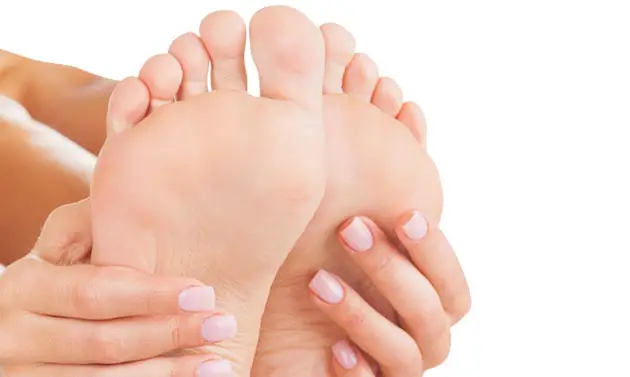Our bodies are very complex mechanisms, engineered in a way where most of the “parts” work with one another so that the entire system functions properly.
Pain can appear to be out of the sudden, but when it becomes prolonged or very intense, it is most likely a sign that something is not functioning properly in your body and that you should visit your physician at least (who may then recommend you to see other specialists, according to the type of pain identified).
Foot pain is definitely very common and while some people may choose to ignore it hope that it will simply go away, the truth is that there may be underlying health issues to it and that you really need to identify them if you want the pain to go away.
Following, you will be explained with what midfoot pain is, what can cause it, how it can be treated, as well as everything else you need to know in order to start feeling better about it.
The Anatomy of the Foot and the Mid Foot Pain
Believe it or not, your foot is a very complex system in itself and there are many parts that compose it so that it can support the entire weight of your body on it.
There are no less than 24 bones and the muscles sustaining them, as well as a string of fibrous tissue that goes from the top of the foot to the bottom of it, which is called plantar fascia and which can actually cause problems on its own as well.
It is no wonder then that every single area of the foot can be affected by several types of problems and that identifying the problem is the absolute key to healing the pain as well.
What Can Cause Mid Foot Pain
There are many things that can lead to feeling pain in the middle part of the foot. Some of them are very common, while others are less common and they may be more or less serious as well. Here are some of the causes you should definitely know about:
1- Navicular stress fracture
The navicular bone is a tarsal bone found in the foot. This kind of injury is common to athletes to perform sprints and jumping a lot and it can be identified by undergoing a bone scan or MRI exam (as the X-ray may not always be fully efficient in revealing the fracture).
2- Extensor tendinitis
This is an inflammation of the tendons that straighten the toes of the feet. It is characterized by pain in the upper part of the midfoot which becomes more intense when the toes are curled and straightened.
The pain can become worse when the person suffering from it is running and sometimes swelling can occur as well.
3- Midtarsal joint sprain
This is a type of injury that occurs in the ligaments holding midtarsal bones of the foot. In this case, the pain will be felt on the outside of the middle foot area.
This particular type of injury is common among gymnasts, football players and those who practice sports that involve jumping a lot.
4- Tibialis posterior tendinitis
The tibialis posterior tendon can be found in the back of the foot and underneath it and when this tendon is inflamed, tibialis posterior tendinitis occurs.
The pain felt in this case will radiate along the length of the foot and it can become worse when the tendon is stretched and the sole of the foot is turned inwards.

5- Plantar fascia strain
When the tissue holding the length of the midfoot together is strained, plantar fascia strain occurs.
This kind of injury can occur all of the sudden or it can be the result of a long-term pressure put on the foot.
Furthermore, the pain will be felt in the area of the arch of the foot and sometimes tenderness appears too. You may also feel a nodule in the plantar fascia as well.
6- Stress fracture of the foot
This is a less commonly encountered condition, but it is definitely worth knowing about it.
This particular type of foot fracture occurs mostly at long distance runners or at those who perform a lot of repetitive movements and it is more common in the 2nd and 3rd metatarsal, but in other bones of the foot as well.
Furthermore, when it occurs under the 5th metatarsal bone (Jones fracture), it will require surgical intervention.
7- Kohler’s disease
This is quite uncommon out there and it is connected to a form of osteochondritis (flaking) of the hard cartilage covering the end part of the navicular bone in children.
The kid will feel pain in the midfoot area, on the navicular bone and the pain may be so strong that it will make the child limp.
The disease is treated with immobilization of the foot in a cast and/or with orthotic inserts in the foot meant to correct its position while moving.
8- Peroneal tendonitis
The outside of the heel will have a bony bit, under which you will find the peroneal tendon.
When this tendon gets inflamed, peroneal tendonitis occurs and it is characterized by pain and by swelling on the outside of the ankle, and it can get worse when exercising, but it can feel improved after a certain period of resting.
Treatment of the Mid Foot Pain
The treatment your doctor will recommend in the case of the midfoot pain will vary, according to the cause that has led to the development of the pain from the very beginning. Sometimes, casts will be necessary.
Other times, resting and using orthotic supports in shoes can be helpful too. And in the fewer cases, the patient may have to undergo surgery that will place supports on the inside of the foot, so that the bone stays in place during the healing process and so that it recovers well.